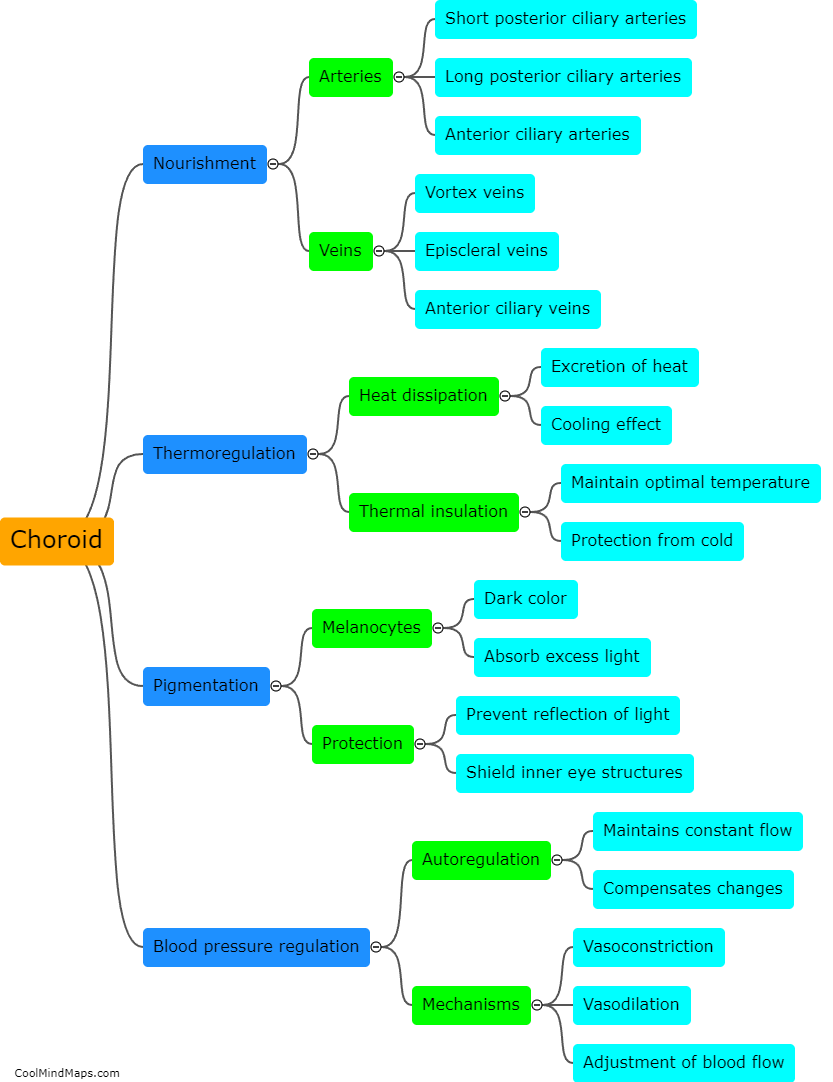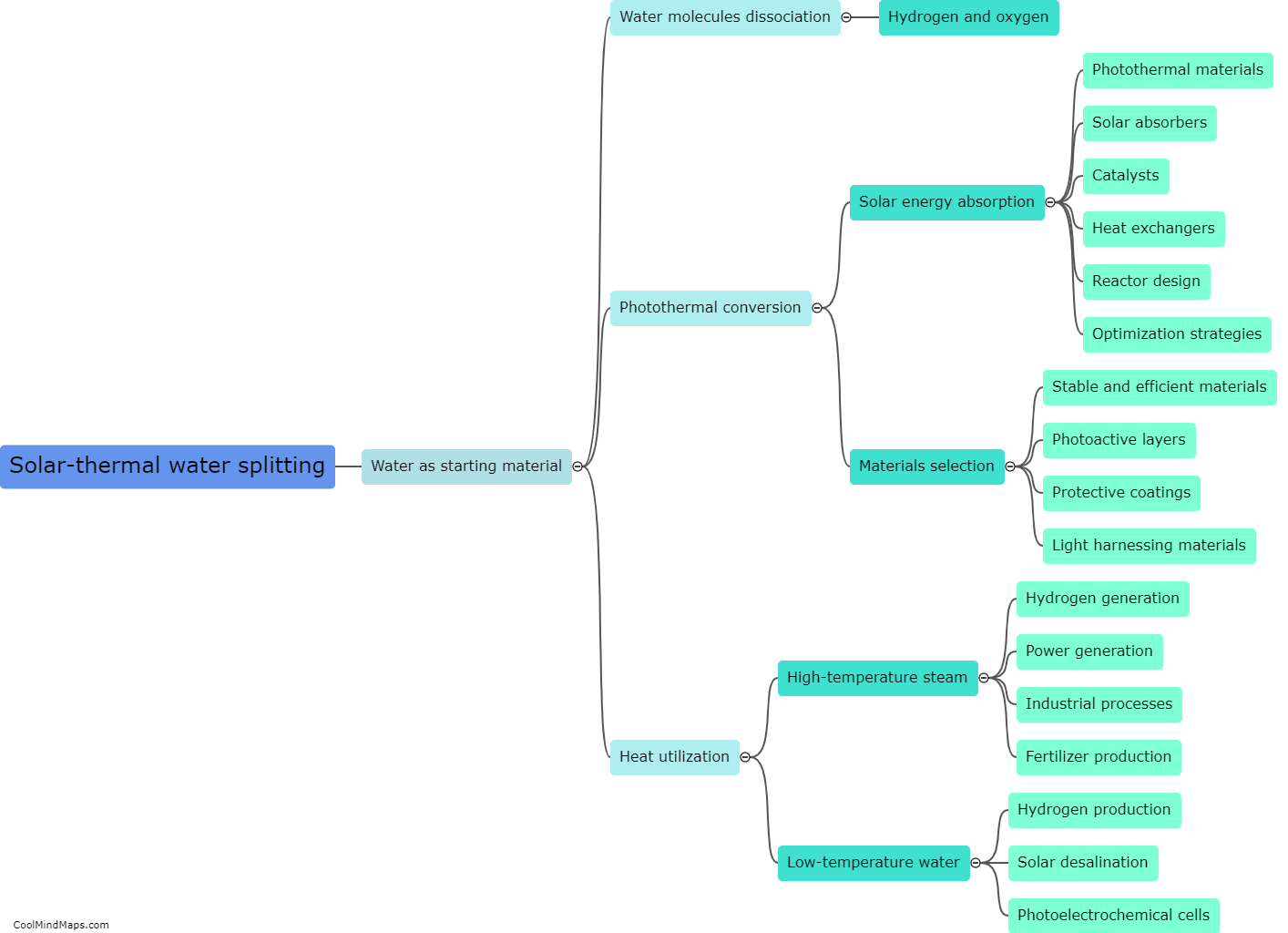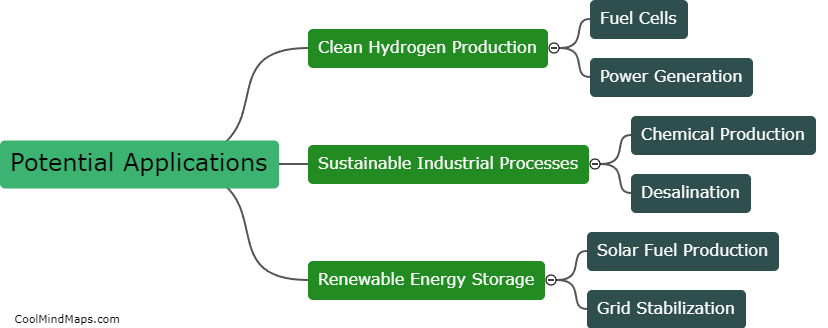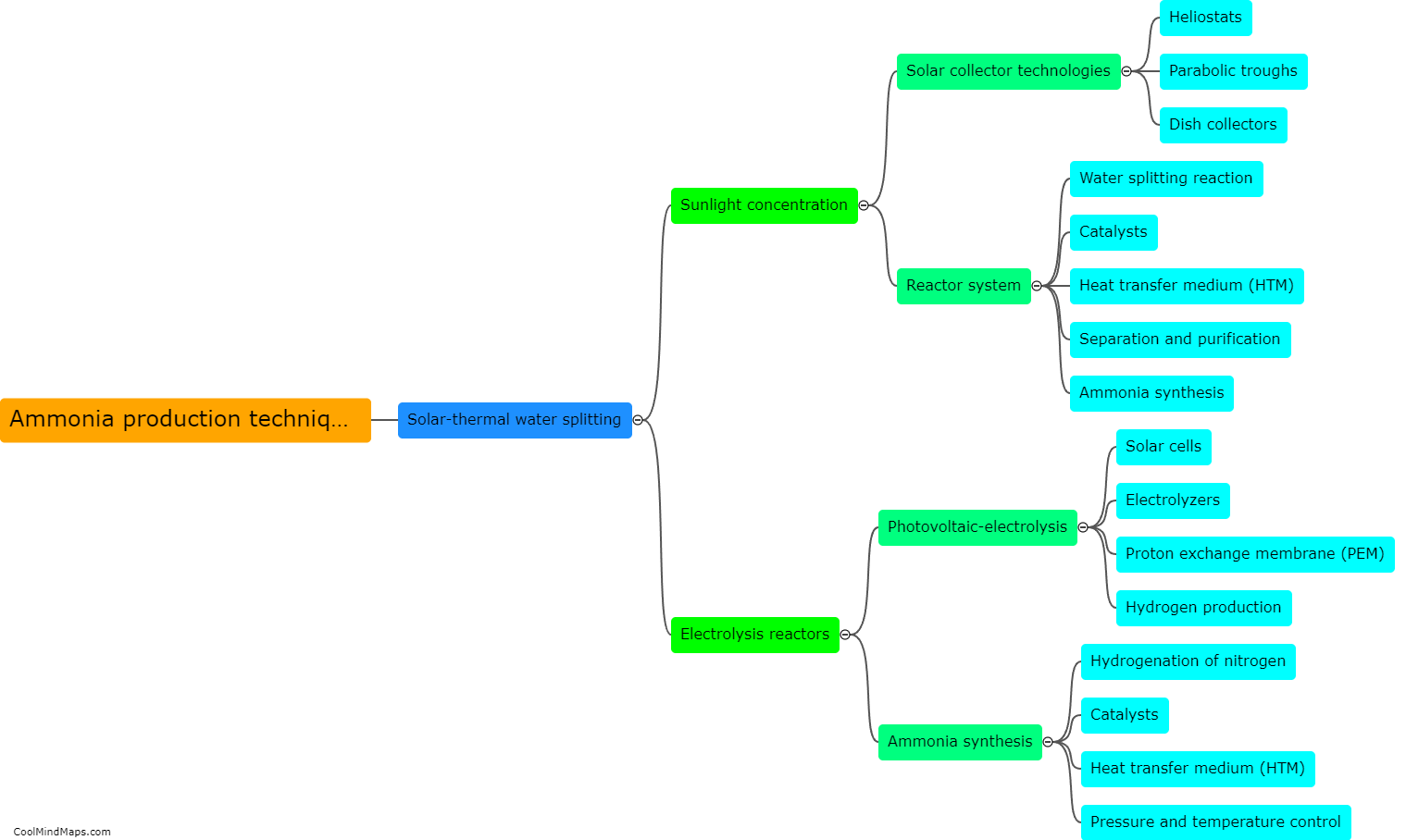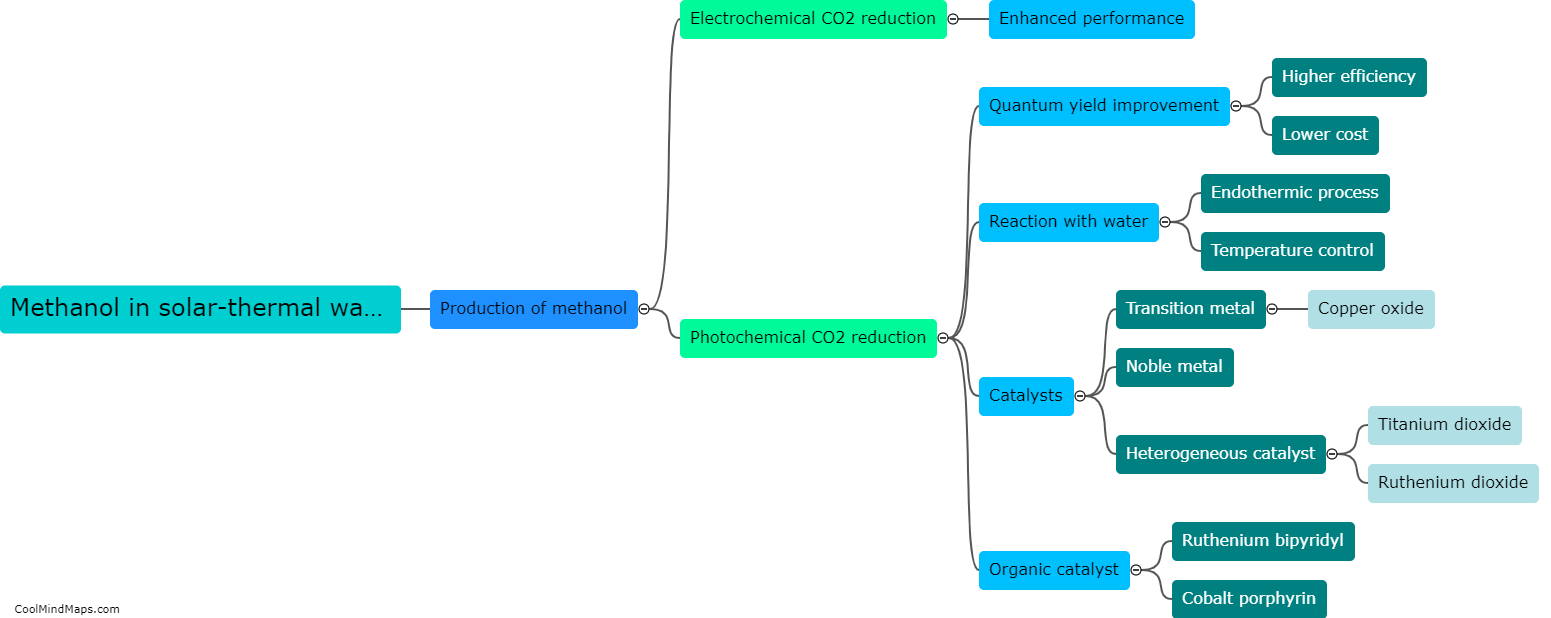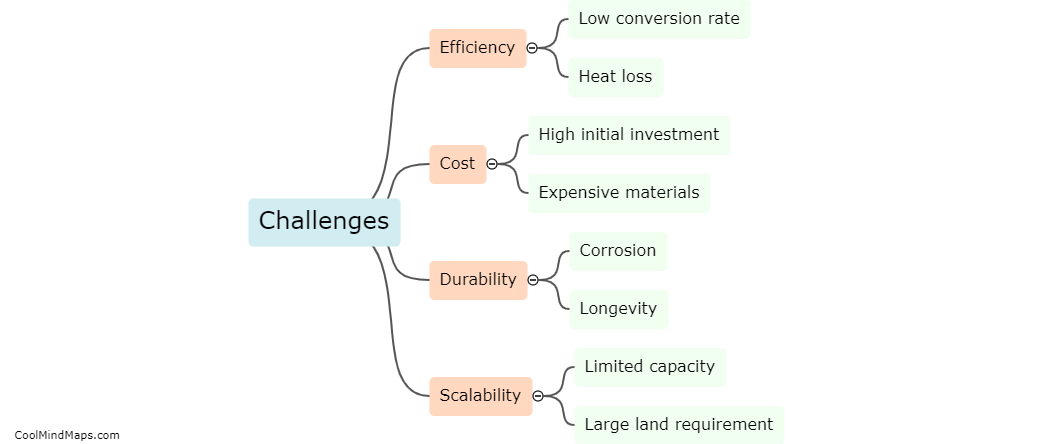How does solar-thermal water splitting compare to other desalination methods?
Solar-thermal water splitting is a promising method for both water desalination and hydrogen production using solar energy. Compared to other desalination methods, such as reverse osmosis or multi-stage flash distillation, solar-thermal water splitting has several advantages. Firstly, it operates at lower temperatures, reducing energy requirements and making it more cost-effective. Additionally, solar-thermal water splitting can utilize a wide range of saltwater sources, including seawater and brackish water, whereas other methods are often limited to specific water types. Furthermore, solar-thermal water splitting produces hydrogen as a byproduct, providing an additional renewable energy source. However, there are still challenges to overcome, including the scale-up of the technology and the need for efficient catalysts, before solar-thermal water splitting can become a widely deployed desalination method.
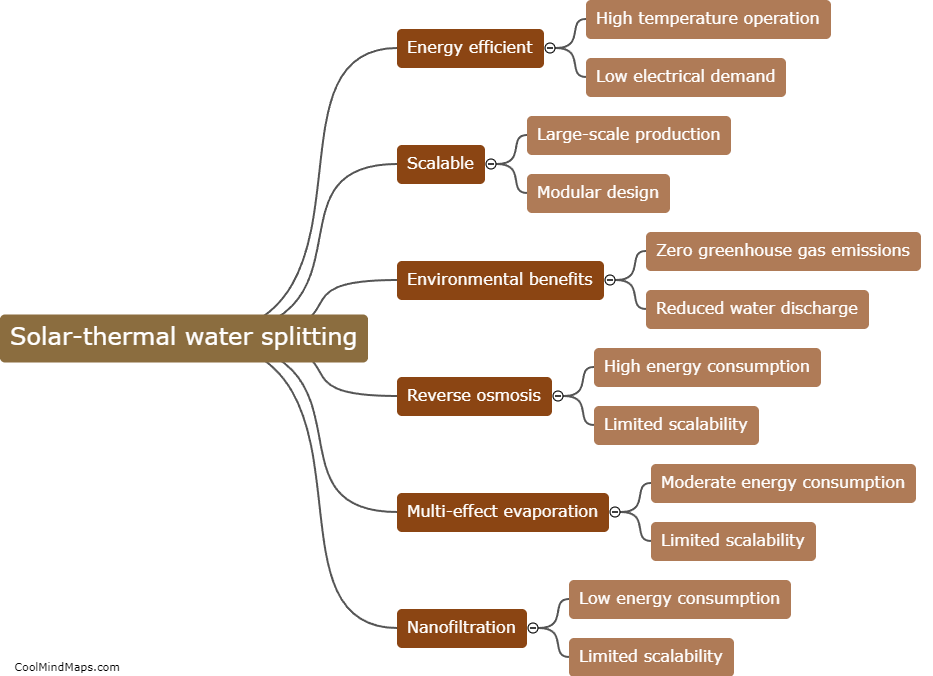
This mind map was published on 17 October 2023 and has been viewed 90 times.


